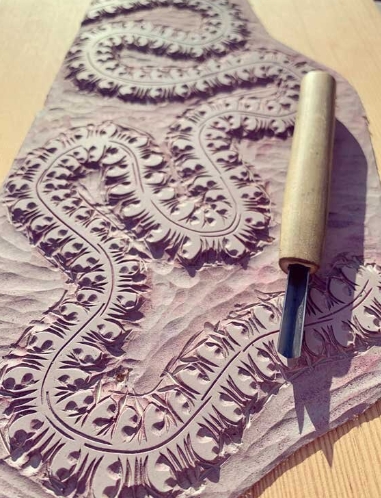Woodblock prints have long been celebrated for their exquisite artistry and unique technique. As a form of relief printing, they hold a special place in the world of printmaking. In this blog post, we will delve into the intricacies of woodblock prints, exploring their history, process, and significance in the art world.
- Introduction to Woodblock Prints:
Woodblock prints, also known as woodcuts, are a type of relief printmaking that originated in ancient China and later spread to Japan and Europe. The technique involves carving an image onto a wooden block, inking the raised surface, and then transferring the image onto paper or fabric. - The History and Evolution:
Woodblock prints have a rich history that spans centuries. In China, they were initially used for reproducing religious texts and images. However, it was in Japan during the Edo period (1603-1868) that woodblock prints gained widespread popularity, known as ukiyo-e, or "pictures of the floating world." These prints depicted various subjects, including landscapes, kabuki actors, and beautiful women, and played a significant role in shaping Japanese art and culture. - The Woodblock Printing Process:
Creating a woodblock print is a meticulous and time-consuming process that requires the collaboration of multiple skilled artisans. The process typically involves the following steps: a. Design and Carving: An artist creates a design on paper, which is then transferred onto a wooden block. Skilled carvers meticulously carve the design into the block, using specialized tools to create varying depths and textures. b. Inking and Printing: The carved block is inked using a roller or brush, ensuring that the ink covers only the raised surfaces. A sheet of paper or fabric is then carefully placed on top of the block, and pressure is applied to transfer the inked image onto the substrate. c. Editioning and Finishing: Multiple prints, known as an edition, can be made from a single block. Each print is inspected, signed, and numbered by the artist. Finally, the prints are often trimmed, mounted, or framed to enhance their presentation. - Significance and Artistic Merit:
Woodblock prints are renowned for their aesthetic appeal and artistic merit. The intricate details, vibrant colors, and expressive lines achieved through this technique have captivated art enthusiasts for centuries. Moreover, woodblock prints have influenced various art movements, such as Impressionism and Art Nouveau, and continue to inspire contemporary artists today. - Preservation and Appreciation:
Preserving woodblock prints is crucial to ensure their longevity and cultural significance. Museums, galleries, and collectors play a vital role in safeguarding these artworks, employing conservation techniques to protect them from deterioration. Additionally, initiatives promoting the appreciation and understanding of woodblock prints, such as exhibitions and educational programs, contribute to their continued relevance in the art world.
In conclusion, woodblock prints are not merely relief prints; they are a testament to the skill, creativity, and cultural heritage of the artists who create them. By exploring the history, process, and significance of woodblock prints, we gain a deeper appreciation for this remarkable art form that continues to captivate audiences worldwide.

